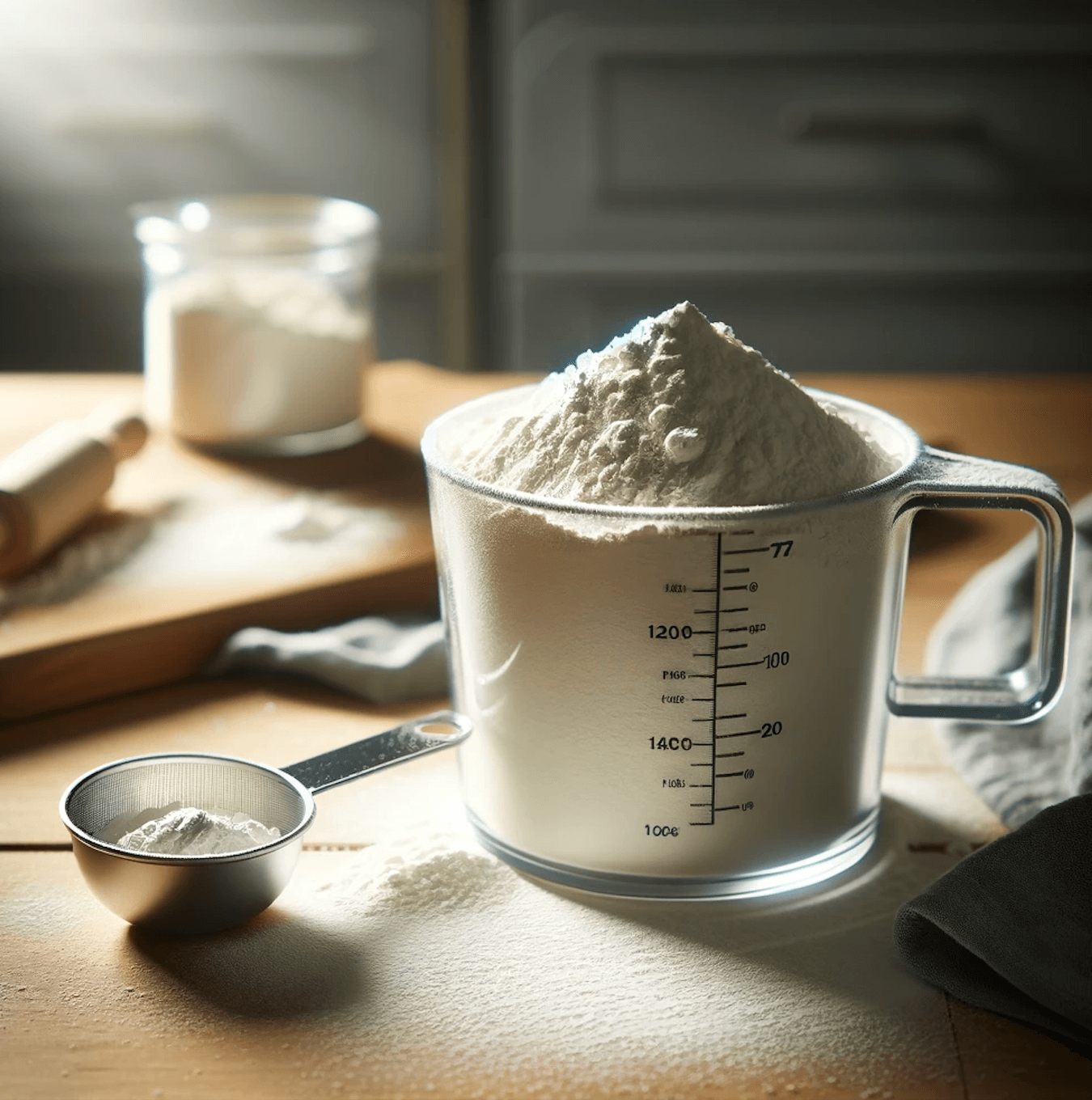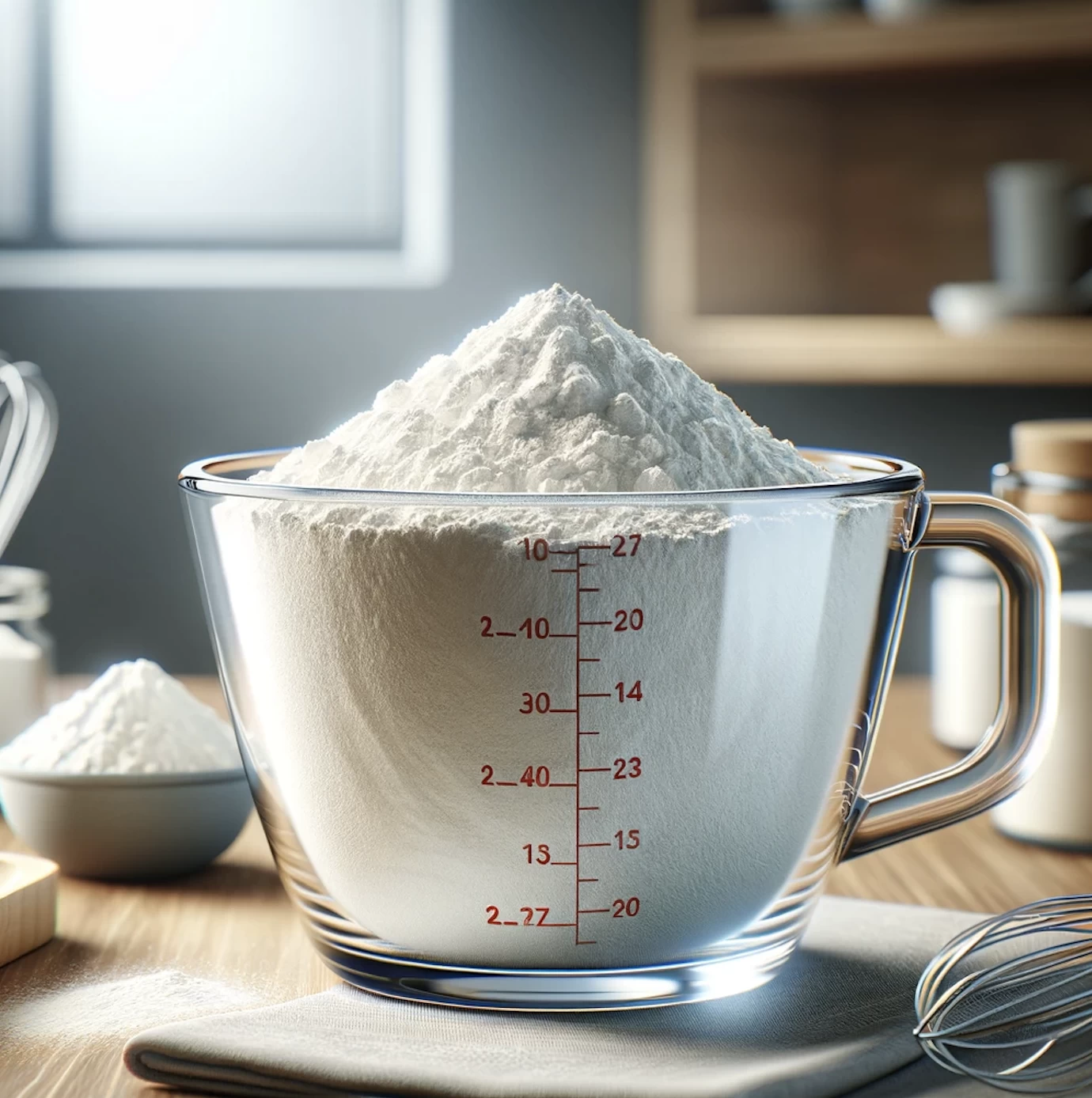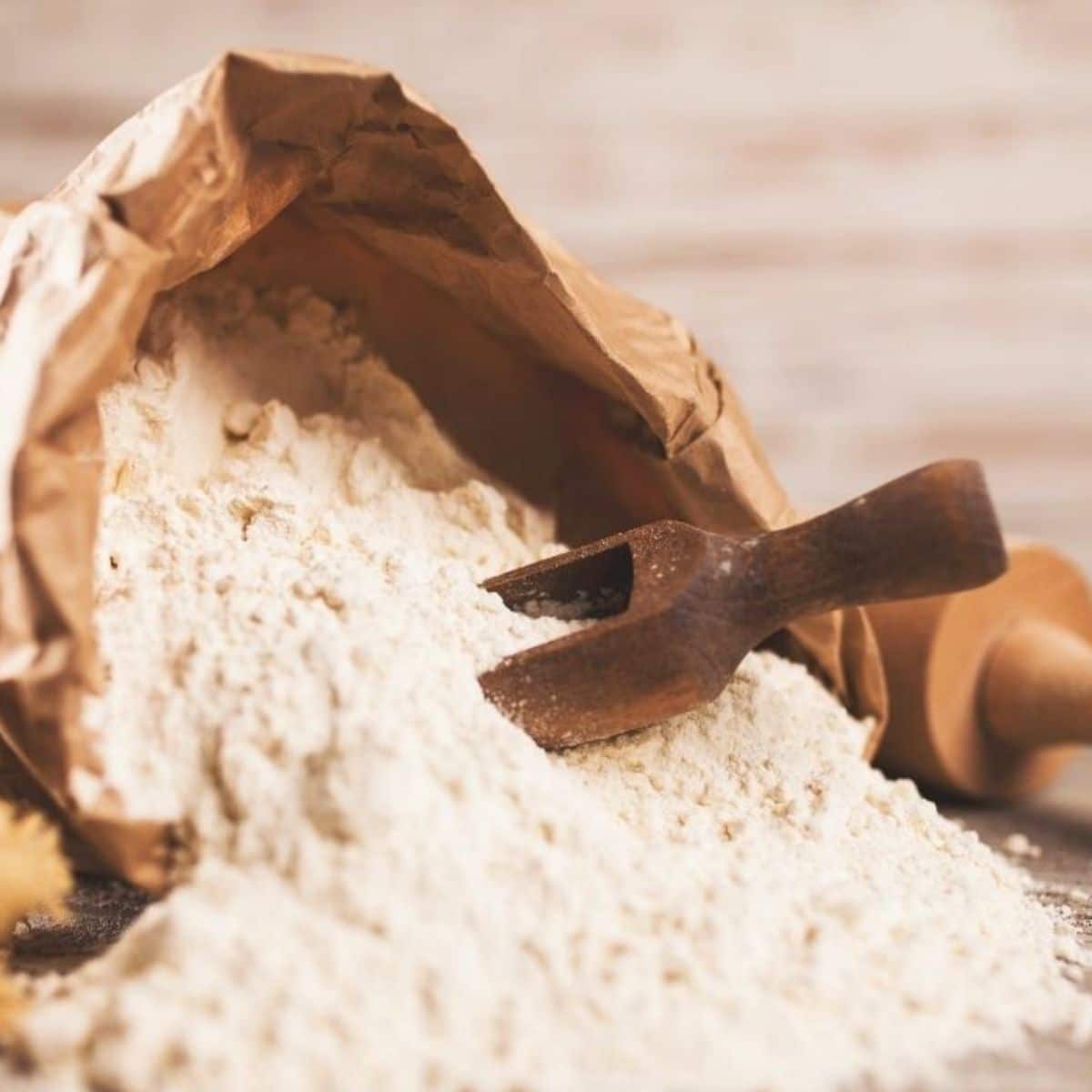300g Flour In Cups - Simple Baking Conversions
Figuring out how much flour you need for a recipe can sometimes feel like a bit of a puzzle, especially when a recipe calls for grams and your measuring tools speak in cups. It's a common situation for many home bakers, you know, trying to get that perfect consistency. When a recipe asks for 300 grams of flour, it really helps to have a good idea of what that looks like in your standard kitchen cup.
Getting your measurements right is, frankly, pretty important for baking success. Unlike cooking where you can often adjust things as you go, baking is a bit more exact, like a gentle science experiment. A little too much or too little of something, and your cookies might turn out flat, or your bread might not rise as it should. So, knowing how to change those gram amounts into cup amounts for things like 300g flour in cups can make all the difference in your final treat.
You might find a few different answers floating around for how many cups are in 300 grams of flour, and that's okay. It’s actually quite normal. These small differences often come from how dense the flour is or how it gets packed into a measuring cup. We’ll explore why these small shifts happen and, well, how you can still get really close to the right amount every time you bake something wonderful.
- Anna Biller Age
- Sharkboy And Lavagirl Floating Face
- Quavo Response
- Sotwe Teen Hijab
- What Is The Name Of Mulans Horse
Table of Contents
- Why Does 300g Flour in Cups Matter for Baking?
- Getting Your 300g Flour in Cups Just Right
- What Influences 300g Flour in Cups Conversions?
- Different Flours and Their 300g Flour in Cups Equivalents
- How Can You Measure 300g Flour in Cups Accurately?
- Tips for Precise 300g Flour in Cups Measuring
- Are There Tools to Help with 300g Flour in Cups?
- Making Sense of 300g Flour in Cups Variations
Why Does 300g Flour in Cups Matter for Baking?
Baking, as many seasoned home cooks will tell you, is a bit like chemistry. Every ingredient plays a particular role, and the amounts of each item truly influence the outcome. Think about it: if you're making a cake, the flour provides the structure, the sugar adds sweetness and tenderness, and the liquid helps everything come together. If you put in too much flour, your cake might turn out dry and crumbly, or if you use too little, it could be too soft and fall apart. That's why knowing how much 300g flour in cups actually is, becomes something that truly matters.
When a recipe specifies grams, it’s often because that measurement is very exact. Grams measure weight, which stays the same no matter how you pack the ingredient. Cups, on the other hand, measure volume. The same cup could hold different amounts of flour depending on whether you scoop it straight from the bag or gently spoon it in. So, to get that consistent, delightful result every time you bake, a precise conversion for things like 300g flour in cups is pretty useful, you know.
This exactness is especially important for recipes that rely on delicate balances, like airy pastries or chewy breads. Even a slight deviation in the amount of flour can change the texture, the way it rises, and even the taste. So, getting a good handle on what 300g flour in cups means for your recipe helps make sure your baked goods come out just as intended, a truly satisfying feeling for any baker, big or small.
- Jared Mccain Nickname
- Flip Wilson Spouse
- Ozempic Before And After
- Lena Paul Net Worth 2024
- Why Does Frieza Call Saiyans Monkeys
Getting Your 300g Flour in Cups Just Right
So, let's talk about the main question: how many cups are in 300 grams of flour? From what we've gathered, 300 grams of flour is about 2 and 3/8 cups, or roughly 2.375 cups. Some sources might say it's closer to 2 and 1/3 cups, or even 2.4 cups. This slight difference, as a matter of fact, is something we can easily work with. The key is to be consistent in your measuring approach.
For most everyday baking, hitting around 2 and 1/3 to 2 and 3/8 cups for 300g flour in cups will get you very, very close to the mark. It's not about being absolutely perfect down to the last grain, but rather about being close enough for the recipe to work its magic. When you’re dealing with flour, a little bit of variation is often expected, and most recipes are quite forgiving within a small range. Just aim for that general area, and you'll likely be fine.
The type of flour you use can also play a role in this conversion, which we'll get into a bit later. But for now, if you're using common all-purpose flour, you can generally count on that 2 and 1/3 to 2 and 3/8 cups measurement for 300g flour in cups. It's a good number to keep in mind, and it will serve you well for many baking projects, honestly.
What Influences 300g Flour in Cups Conversions?
You might wonder why there isn't one single, definite answer for how many cups are in 300 grams of flour. It's not like converting inches to centimeters, which is always the same. The main reason for this slight variation has to do with how dense the flour is and how it gets put into the measuring cup. Different types of flour have different weights for the same amount of space they take up, which is a bit like saying a cup of feathers weighs less than a cup of rocks, you know.
Think about a bag of flour. It's not a solid block; it's made up of tiny particles with air pockets in between. The amount of air trapped in the flour can change quite a bit depending on how it's stored, how much it's been shaken, or even the humidity in your kitchen. This means that a cup of flour might not always weigh exactly the same as another cup of flour, even if it's the same type. This is why 300g flour in cups can sometimes seem a bit variable.
Another thing that changes the weight is how you fill your measuring cup. If you scoop the cup directly into the flour bag, you're likely to pack it down more, making it heavier. If you spoon the flour gently into the cup and then level it off, you'll have less flour by weight. These small actions really do add up and cause those tiny differences in what 300g flour in cups might mean for you on any given day, so.
Different Flours and Their 300g Flour in Cups Equivalents
Not all flours are created equal when it comes to density. For example, a cup of all-purpose flour typically weighs less than a cup of whole wheat flour, and a cup of cake flour is usually lighter still. This is because of differences in how finely they are ground, their protein content, and how much moisture they hold. So, when you're thinking about 300g flour in cups, the type of flour really does matter.
For standard all-purpose flour, as we talked about, 300 grams is generally around 2 and 1/3 to 2 and 3/8 cups. But if you're working with something like whole wheat flour, which is a bit heavier, 300 grams might be closer to 2 cups or even slightly less. Cake flour, being lighter and more finely milled, would likely take up more space for the same weight, meaning 300 grams could be closer to 2 and 1/2 cups or even a bit more. It's actually quite interesting how much variation there is.
This is why some bakers prefer to use a kitchen scale for flour, especially for recipes where precision is extra important. A scale measures weight, which is constant regardless of the flour type or how fluffy it is. But if you're sticking to cups, just be aware that the type of flour will have an effect on your 300g flour in cups conversion. It's a good idea to look up specific conversions for different flour types if your recipe calls for something other than all-purpose, you know, just to be sure.
How Can You Measure 300g Flour in Cups Accurately?
Even though cups measure volume and grams measure weight, there are ways to make your cup measurements for flour as accurate as possible, especially when aiming for something like 300g flour in cups. The most widely recommended method for measuring flour by volume is called the "spoon and level" method. This approach helps reduce the amount of extra flour you might accidentally pack into your cup, which can really throw off your recipe.
Here’s how it works: first, use a spoon to lightly fluff up the flour in its container or bag. This helps loosen any packed-down flour and adds a bit of air back into it. Then, gently spoon the flour into your measuring cup until it overflows a little. Don't shake the cup or tap it on the counter, as this will cause the flour to settle and pack down. Finally, use the flat edge of a knife or a straight kitchen tool to level off the top of the cup, scraping away any excess flour. This method gives you a much more consistent amount for your 300g flour in cups calculation, as a matter of fact.
If you just scoop your measuring cup directly into the flour bag, you're likely to pick up a lot more flour than the recipe intends. This can add an extra 20% or even 30% to your measurement by weight, which is a significant difference in baking. So, taking that extra moment to spoon and level will seriously improve your results and make your 300g flour in cups conversion more reliable, pretty much every time.
Tips for Precise 300g Flour in Cups Measuring
Beyond the spoon and level method, there are a few other little things you can do to get your 300g flour in cups conversion as close as possible. One simple tip is to always use standard measuring cups designed for dry ingredients. These cups are meant to be leveled off, unlike liquid measuring cups which usually have a spout and lines below the rim. Using the right tools helps a lot, you know.
Another helpful practice is to make sure your flour is at room temperature. Very cold flour can be denser, while very warm flour might be a bit lighter. Keeping your ingredients at a consistent temperature helps with consistent measurements. Also, if your flour has been sitting for a while, it might become more compacted. Giving it a good stir or fluff with a spoon before you start measuring can make a real difference in how accurate your 300g flour in cups ends up being, so.
If you're still worried about accuracy, especially for very sensitive recipes, consider cross-referencing your cup measurement with a rough weight check. For example, if you know 300g flour in cups is around 2 and 1/3 cups, you can measure that out and then, if you have a kitchen scale, quickly weigh it to see how close you are to 300 grams. This isn't always necessary, but it can give you peace of mind and help you get a feel for how your specific measuring technique translates to weight, which is really quite useful.
Are There Tools to Help with 300g Flour in Cups?
When it comes to getting really precise measurements for ingredients like flour, especially when dealing with conversions like 300g flour in cups, a kitchen scale is, without a doubt, your best friend. A digital kitchen scale can measure ingredients by weight, usually in grams or ounces, which takes all the guesswork out of how much flour you're actually putting into your bowl. This is because a gram of flour will always be a gram of flour, no matter how fluffy or compacted it is.
Using a scale is incredibly simple. You just place your mixing bowl or a separate container on the scale, press the "tare" or "zero" button to reset the weight, and then add your flour until the display shows 300 grams. There's no need to fluff, spoon, or level. This method ensures that you get exactly the amount the recipe calls for, which can lead to more consistent and often better baking results. It's truly a game-changer for many home bakers, you know.
While measuring cups are convenient and perfectly fine for many recipes, they do introduce a degree of variability. For those who bake often or want to achieve very specific textures, investing in a good kitchen scale is a worthwhile purchase. It simplifies the process of getting 300g flour in cups, or any other ingredient amount, just right, and it can help prevent common baking mishaps that stem from inaccurate measurements. It’s a tool that pays for itself in delicious outcomes, pretty much.
Making Sense of 300g Flour in Cups Variations
As we've touched on, you might see slightly different numbers when you look up "300g flour in cups." Some sources might say 2 and 3/8 cups (2.375 cups), others 2 and 1/3 cups (about 2.33 cups), and some even 2.4 cups. These small differences are usually due to a few things: the assumed density of the flour, slight rounding in conversions, and the method of measurement used when the conversion was first calculated. It’s not a sign that one source is wrong and another is right; it's more about slight variations in how flour behaves, so.
For example, a common conversion for all-purpose flour is that 1 cup weighs about 120 grams. If you use that number, then 300 grams divided by 120 grams per cup gives you 2.5 cups. However, many baking experts use a slightly higher average weight per cup, perhaps 125 grams or even 128 grams, especially for flour that has been spooned and leveled. If a cup is 125 grams, then 300 grams would be 2.4 cups. If a cup is 128 grams, it's closer to 2.34 cups, which is very close to 2 and 1/3 cups. This is why you see the range for 300g flour in cups, as a matter of fact.
The key takeaway is that for most home baking, aiming for somewhere between 2 and 1/3 cups and 2 and 3/8 cups for 300g flour in cups will be perfectly adequate. Unless you are working on a highly sensitive recipe or baking at a very high altitude, these small differences are unlikely to ruin your creation. Focus on using a consistent measuring technique, and you'll find your baking results are quite reliable, honestly. Practice makes perfect, and getting a feel for your ingredients is part of the fun of baking, you know.
- Crystal Couture Dress Toimpress
- Bem Painful Video
- What Is Gojos Last Name
- Services Offered By The Spa At Venetian Bay
- What Is Gojos Surname

1000 grams of flour in cups - Flour Grams to Cups Conversion

350 grams of flour in cups - Flour Grams to Cups Conversion

How Many Cups In A Pound of Flour? (& How To Measure Correctly!)